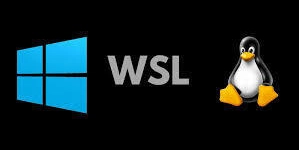Windows Subsystem for Linux (WSL)
Introduction In my early days of learning DevOps, one of the biggest challenges I faced was setting up a Linux environment on my laptop. Since I was already comfortable with Windows, I found it difficult to make a complete switch to Linux, mainly because I still needed access to certain Windows applications. I initially tried dual-booting, but it felt cumbersome—I wanted both operating systems to work side by side without rebooting. Then I experimented with virtual machines (VMs), which worked but drained my laptop’s battery too quickly. During my search for a better solution, I discovered Windows Subsystem for Linux (WSL), which turned out to be the perfect answer to my problem. Since then, I haven’t looked back—WSL allows me to run a Linux environment directly within Windows, seamlessly integrating both systems. What is WSL? Windows Subsystem for Linux (WSL) is a powerful compatibility layer that enables users to run a full Linux environment natively on Windows. Unlike traditional virtual machines or dual-boot setups, WSL provides a lightweight and efficient way to access Linux tools and utilities directly from Windows. WSL is particularly useful for developers, system administrators, and DevOps engineers who require Linux-based tools while maintaining a Windows workflow. This guide will cover everything you need to know about WSL, from installation to advanced usage. Why Use WSL? WSL offers several advantages over traditional virtualization and dual-boot setups: Seamless Integration: Run Linux commands and applications alongside Windows programs. Low Resource Usage: No need for additional system resources to run a separate virtual machine. Native Performance: WSL 2 provides full system call compatibility and improved performance with a real Linux kernel. Improved Developer Experience: Use Linux-native tools, package managers, and programming languages without leaving Windows. Better Docker Support: WSL 2 significantly improves Docker’s performance and integration with Windows. Installing WSL on Windows To install WSL on your Windows machine, follow these steps: Prerequisites Ensure that your system is running Windows 10 version 2004 and higher (Build 19041 and higher) or Windows 11. Step 1: Enable WSL Open PowerShell as Administrator and execute the following command: wsl --install This command automatically installs WSL and the default Linux distribution (Ubuntu), which can be changed later. If you already have WSL installed but want to update to WSL 2, run: wsl --update Step 2: Verify Installed Distributions Check the available and installed distributions with: wsl --list --verbose This will display: Installed Linux distributions The default WSL version (WSL 1 or WSL 2) Step 3: Set WSL 2 as Default To take advantage of WSL 2’s features, set it as the default version: wsl --set-default-version 2 Step 4: Install Additional Linux Distributions To install another Linux distribution, run: wsl --install -d Replace with your preferred Linux distribution. To see a list of available distributions, run: wsl --list --online If you need to upgrade a specific distribution to WSL 2, use: wsl --set-version 2 Replace with the name of your installed Linux distribution. Using WSL Launching WSL To start WSL, simply open a terminal and run: wsl The first time you launch a distribution, you'll need to create a user account and password. Pro Tip: Use Windows Terminal for a Better Experience Windows Terminal supports multiple command-line environments (PowerShell, Command Prompt, Azure CLI, Git Bash, etc.). It allows you to open multiple tabs and split panes for improved multitasking. You can fully customize your terminal with color schemes, fonts, background images, and custom keyboard shortcuts. You can also launch your Linux distribution directly from the Windows Start menu by typing its name, such as "Ubuntu". Running Linux Commands in Windows After launching WSL, you can execute Linux commands just like in a standard Linux environment: ls -la cd /home cat /etc/os-release Installing Linux Packages Each WSL distribution has its own package manager. For Ubuntu-based distributions, use apt: sudo apt update && sudo apt upgrade sudo apt install git curl vim For Fedora-based distributions, use dnf: sudo dnf install nano wget Accessing Windows Files from WSL WSL allows seamless file sharing between Windows and Linux. To access Windows files from WSL: cd /mnt/c ls This maps the Windows C: drive to /mnt/c, enabling file access between the two environments. WSL 1 vs WSL 2: Key Differences Feature WSL 1 WSL 2 System Call Compatibility Partial Full File I/O Performance Faster for Windows-to-Linux operations Fast

Introduction
In my early days of learning DevOps, one of the biggest challenges I faced was setting up a Linux environment on my laptop. Since I was already comfortable with Windows, I found it difficult to make a complete switch to Linux, mainly because I still needed access to certain Windows applications.
I initially tried dual-booting, but it felt cumbersome—I wanted both operating systems to work side by side without rebooting. Then I experimented with virtual machines (VMs), which worked but drained my laptop’s battery too quickly.
During my search for a better solution, I discovered Windows Subsystem for Linux (WSL), which turned out to be the perfect answer to my problem. Since then, I haven’t looked back—WSL allows me to run a Linux environment directly within Windows, seamlessly integrating both systems.
What is WSL?
Windows Subsystem for Linux (WSL) is a powerful compatibility layer that enables users to run a full Linux environment natively on Windows. Unlike traditional virtual machines or dual-boot setups, WSL provides a lightweight and efficient way to access Linux tools and utilities directly from Windows.
WSL is particularly useful for developers, system administrators, and DevOps engineers who require Linux-based tools while maintaining a Windows workflow. This guide will cover everything you need to know about WSL, from installation to advanced usage.
Why Use WSL?
WSL offers several advantages over traditional virtualization and dual-boot setups:
- Seamless Integration: Run Linux commands and applications alongside Windows programs.
- Low Resource Usage: No need for additional system resources to run a separate virtual machine.
- Native Performance: WSL 2 provides full system call compatibility and improved performance with a real Linux kernel.
- Improved Developer Experience: Use Linux-native tools, package managers, and programming languages without leaving Windows.
- Better Docker Support: WSL 2 significantly improves Docker’s performance and integration with Windows.
Installing WSL on Windows
To install WSL on your Windows machine, follow these steps:
Prerequisites
Ensure that your system is running Windows 10 version 2004 and higher (Build 19041 and higher) or Windows 11.
Step 1: Enable WSL
Open PowerShell as Administrator and execute the following command:
wsl --install
This command automatically installs WSL and the default Linux distribution (Ubuntu), which can be changed later.
If you already have WSL installed but want to update to WSL 2, run:
wsl --update
Step 2: Verify Installed Distributions
Check the available and installed distributions with:
wsl --list --verbose
This will display:
- Installed Linux distributions
- The default WSL version (WSL 1 or WSL 2)
Step 3: Set WSL 2 as Default
To take advantage of WSL 2’s features, set it as the default version:
wsl --set-default-version 2
Step 4: Install Additional Linux Distributions
To install another Linux distribution, run:
wsl --install -d
Replace
To see a list of available distributions, run:
wsl --list --online
If you need to upgrade a specific distribution to WSL 2, use:
wsl --set-version 2
Replace
Using WSL
Launching WSL
To start WSL, simply open a terminal and run:
wsl
The first time you launch a distribution, you'll need to create a user account and password.
Pro Tip: Use Windows Terminal for a Better Experience
- Windows Terminal supports multiple command-line environments (PowerShell, Command Prompt, Azure CLI, Git Bash, etc.).
- It allows you to open multiple tabs and split panes for improved multitasking.
- You can fully customize your terminal with color schemes, fonts, background images, and custom keyboard shortcuts.
You can also launch your Linux distribution directly from the Windows Start menu by typing its name, such as "Ubuntu".
Running Linux Commands in Windows
After launching WSL, you can execute Linux commands just like in a standard Linux environment:
ls -la
cd /home
cat /etc/os-release
Installing Linux Packages
Each WSL distribution has its own package manager. For Ubuntu-based distributions, use apt:
sudo apt update && sudo apt upgrade
sudo apt install git curl vim
For Fedora-based distributions, use dnf:
sudo dnf install nano wget
Accessing Windows Files from WSL
WSL allows seamless file sharing between Windows and Linux. To access Windows files from WSL:
cd /mnt/c
ls
This maps the Windows C: drive to /mnt/c, enabling file access between the two environments.
WSL 1 vs WSL 2: Key Differences
| Feature | WSL 1 | WSL 2 |
|---|---|---|
| System Call Compatibility | Partial | Full |
| File I/O Performance | Faster for Windows-to-Linux operations | Faster for Linux-to-Linux operations |
| Uses a Linux Kernel | No | Yes |
| Virtual Machine Integration | No | Yes |
| Docker Support | Limited | Fully Supported |
Recommendation: Use WSL 2 for better performance and full Linux kernel support, especially if you plan to run Docker or complex Linux workloads.
Advanced WSL Features
Using WSL with Docker
WSL 2 greatly enhances Docker’s performance. To integrate Docker with WSL:
- Install Docker Desktop.
- Enable WSL 2 support in Docker settings.
- Run the following command to verify installation:
docker run hello-world
Real-World Use Cases
- Web Development: Run Node.js, Python, and other web frameworks natively in Linux.
- DevOps & Cloud Engineering: Use WSL for Kubernetes, Terraform, Ansible, and CI/CD workflows.
- Security & Penetration Testing: Install Kali Linux on WSL for ethical hacking and security research.
- Machine Learning & Data Science: Run Jupyter notebooks and ML libraries with native Linux support.
Troubleshooting Common Issues
Issue: "WSL Not Recognized"
Solution: Ensure WSL is enabled by running:
dism.exe /online /enable-feature /featurename:Microsoft-Windows-Subsystem-Linux /all /norestart
Issue: "No Internet Access in WSL"
Solution: Restart the WSL network adapter:
wsl --shutdown
netsh winsock reset
Then restart WSL and check network connectivity.
Issue: "Docker Not Working with WSL 2"
Solution: Ensure that WSL integration is enabled in Docker Desktop settings under "Resources > WSL Integration."
Conclusion
WSL is a powerful tool that bridges Windows and Linux, providing developers and IT professionals with the best of both worlds. By following this guide, you should now have a solid understanding of how to install, configure, and use WSL effectively. Happy coding!
Further Reading
Have you used WSL? Share your thoughts in the comments!




















































%20Abstract%20Background%20112024%20SOURCE%20Amazon.jpg)






















































































































![[The AI Show Episode 142]: ChatGPT’s New Image Generator, Studio Ghibli Craze and Backlash, Gemini 2.5, OpenAI Academy, 4o Updates, Vibe Marketing & xAI Acquires X](https://www.marketingaiinstitute.com/hubfs/ep%20142%20cover.png)
























































































































































































































































-Nintendo-Switch-2-–-Overview-trailer-00-00-10.png?width=1920&height=1920&fit=bounds&quality=80&format=jpg&auto=webp#)





















_Anna_Berkut_Alamy.jpg?#)













































































































![YouTube Announces New Creation Tools for Shorts [Video]](https://www.iclarified.com/images/news/96923/96923/96923-640.jpg)





































































![[Weekly funding roundup March 29-April 4] Steady-state VC inflow pre-empts Trump tariff impact](https://images.yourstory.com/cs/2/220356402d6d11e9aa979329348d4c3e/WeeklyFundingRoundupNewLogo1-1739546168054.jpg)





























































